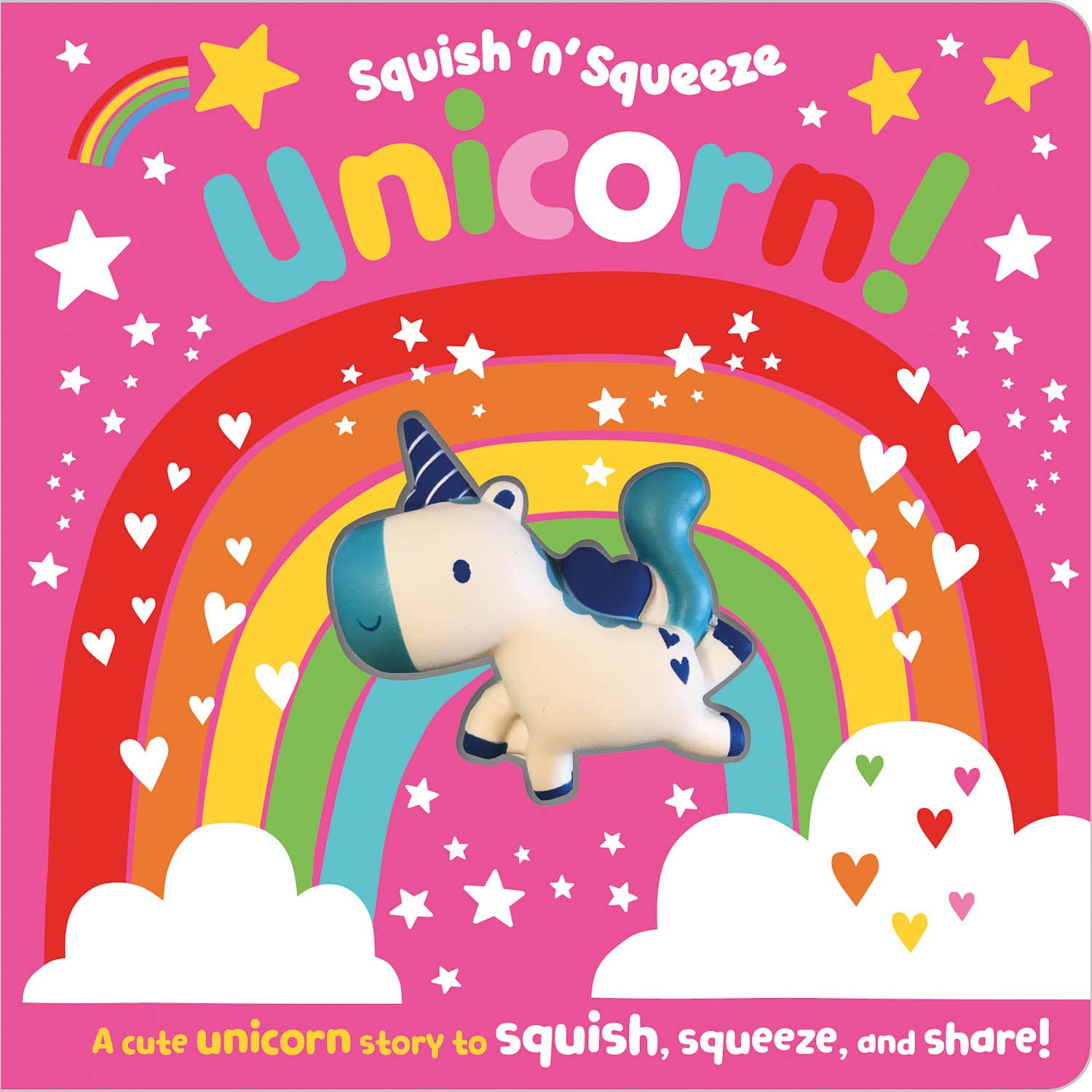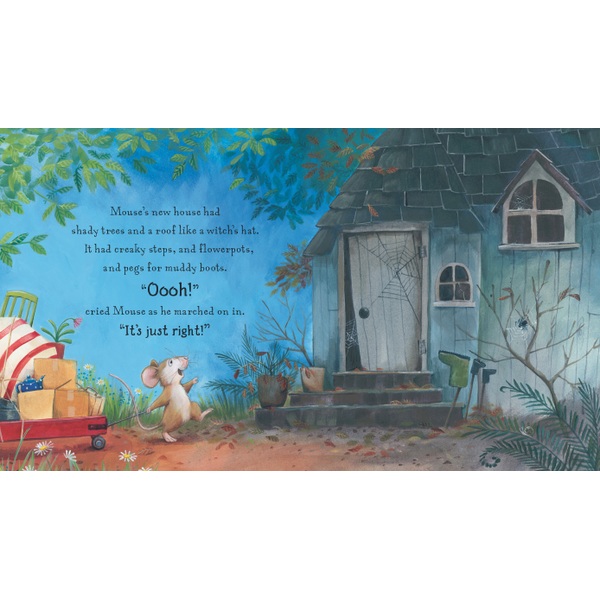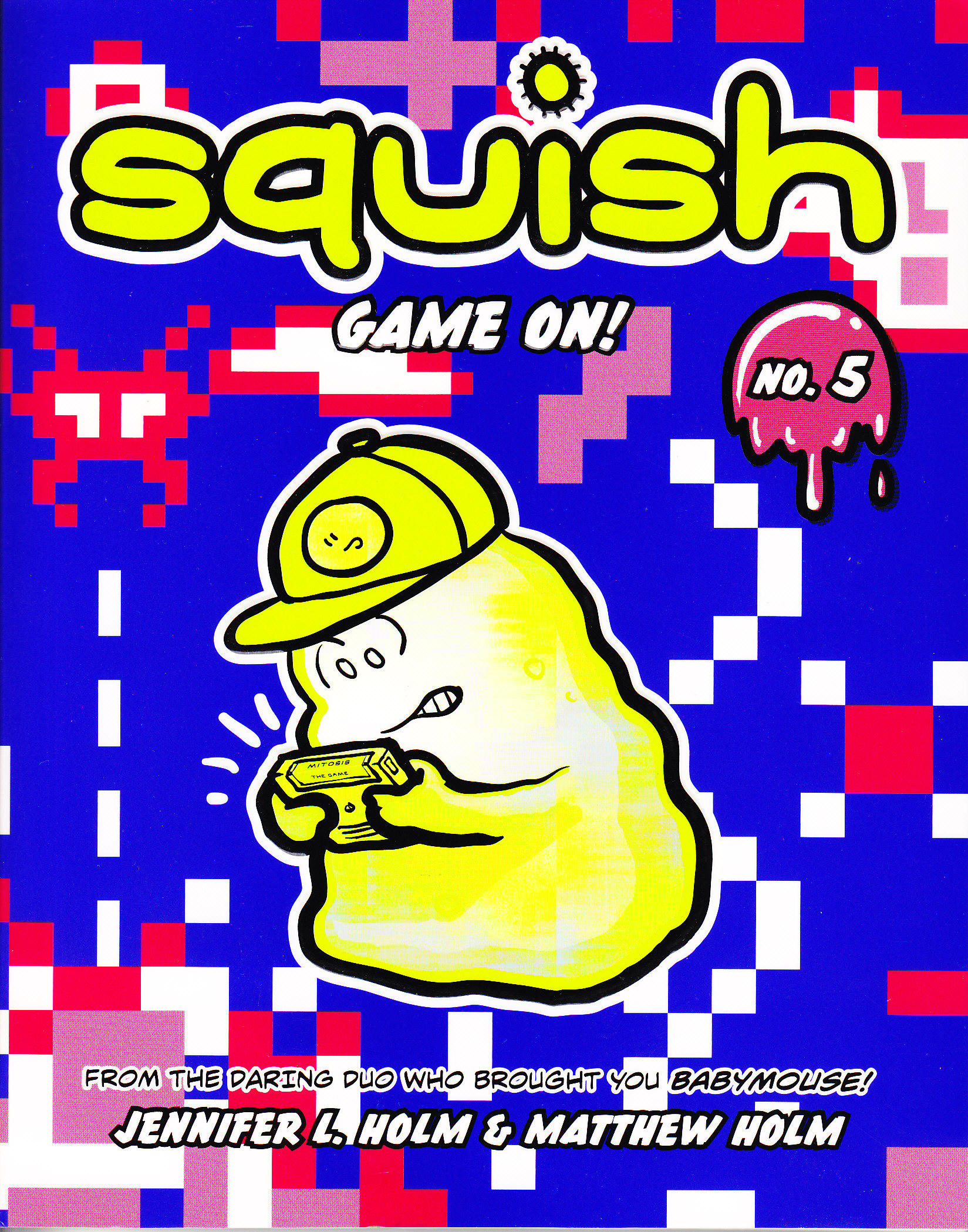
Though they will appeal most to younger readers (maybe grades 1-4), I highly recommend these books for middle schools, too.
SQUISH BOOK SERIES
STATUS IN MY LIBRARY: I’ve had the Squish and Babymouse series in every school library I’ve worked in (that would be four!). If you don’t have it yet, what on earth are you waiting for? THE BOTTOM LINE: I doubt there are many elementary or even middle school libraries that do not have this incredibly popular series.
SQUISH BOOK HOW TO
I love the recipe to grow your own mold in the back, as well as the tutorial on how to draw your own Squish character. I love how the book has lots of science references and little nuggets of information about paramecia, amoebas, planaria, and plant parts. I love that the black and white illustrations are accented with a bright, slimy green. I completely see why this little graphic novel is so darn popular with younger readers. Can Squish find the hero within himself in time to save Peggy? His naive friend Peggy the Paramecium doesn’t realize she’s about to be eaten by a insatiably hungry, mean amoeba named Lynwood. His best friend Pod keeps asking for Squish’s taco money in order to solve global warming. See How to Create and Use Synchronization Points (Section 5.11) for examples of use.SUMMARY: Squish may be a microscopic amoeba, but he has big problems. Useful if you want to synchronize your script execution to a certain

This function is designed as a quick and easy way to poll for aĬondition in the AUT, where each conditionĮxecution takes a very short time (typically a fraction of a second),Īnd always returns true or false. Which case waitFor will finish and return
SQUISH BOOK CODE
Perform another iteration, that is, execute theĬondition code again, and again check its return

Iteration it executes the condition code and The waitFor function loops one or more times, and on each The condition is a piece of code to evaluate, passed asĪ string or as a function reference, and that is expected to return a Boolean Real (multi-property) name specifying the object's QObject::setObjectName method), and then in test scripts use a Object in code is to set an object name in C++ for all the objects of See How to Identify and Access Objects (Section 5.1) for more about names.įor Qt programs the easiest and most reliable way of identifying an Symbolic names are the most robust in theįace of AUT changes, but real names can sometimes be more convenient to Squish provides several naming schemes, but the ones normally used are To identify the object of interest is particularly important. Many of the APIs' functions apply to particular objects, so being able Not swapped (the default), the left button is the primary button.
SQUISH BOOK WINDOWS
Windows setting which can be use to swap the mouse buttons. Windows test suites also support two more possible mouse button specifiers, For Perl and Ruby replace the period with twoĬolons, e.g., Modifier::Control, and for Tcl use theĮnum function, e.g., enum Modifier Control.įor Perl use this: MouseButton::LeftButton, etc.įor Ruby use this: MouseButton::LEFT_BUTTON, etc.įor Tcl use this: enum MouseButton LeftButton, etc. If more than one modifier is used, they must be The modifierState can be 0 ( Modifier.None, Which indicates which mouse button was clicked. And some of theįunctions can also take a mouseButton argument Special keys are pressed at the time of a mouse click. ModifierState argument which indicates which

Some of the Squish API functions can take a Reference to an object or the name of an object. ObjectOrName argument, this argument can be a Squish objects or the toolkit-specific convenience functions):įor all of the Squish API functions that take an

Here are some quick links to the Squish API functions (not including the Performing verifications, controlling the AUT, and more. Interacting with AUT objects, to recording information in test logs, GUI applications, and offer a wide range of functionality, from Squish APIs provide the facilities that test engineers need to test The standard features of the scripting languages it supports. This section introduces the APIs that Squish provides in addition to
SQUISH BOOK VERIFICATION
Script-based Creation of Visual Verification Points 6.3.10. Constructors, Functions and Properties 6.3.2.


 0 kommentar(er)
0 kommentar(er)
